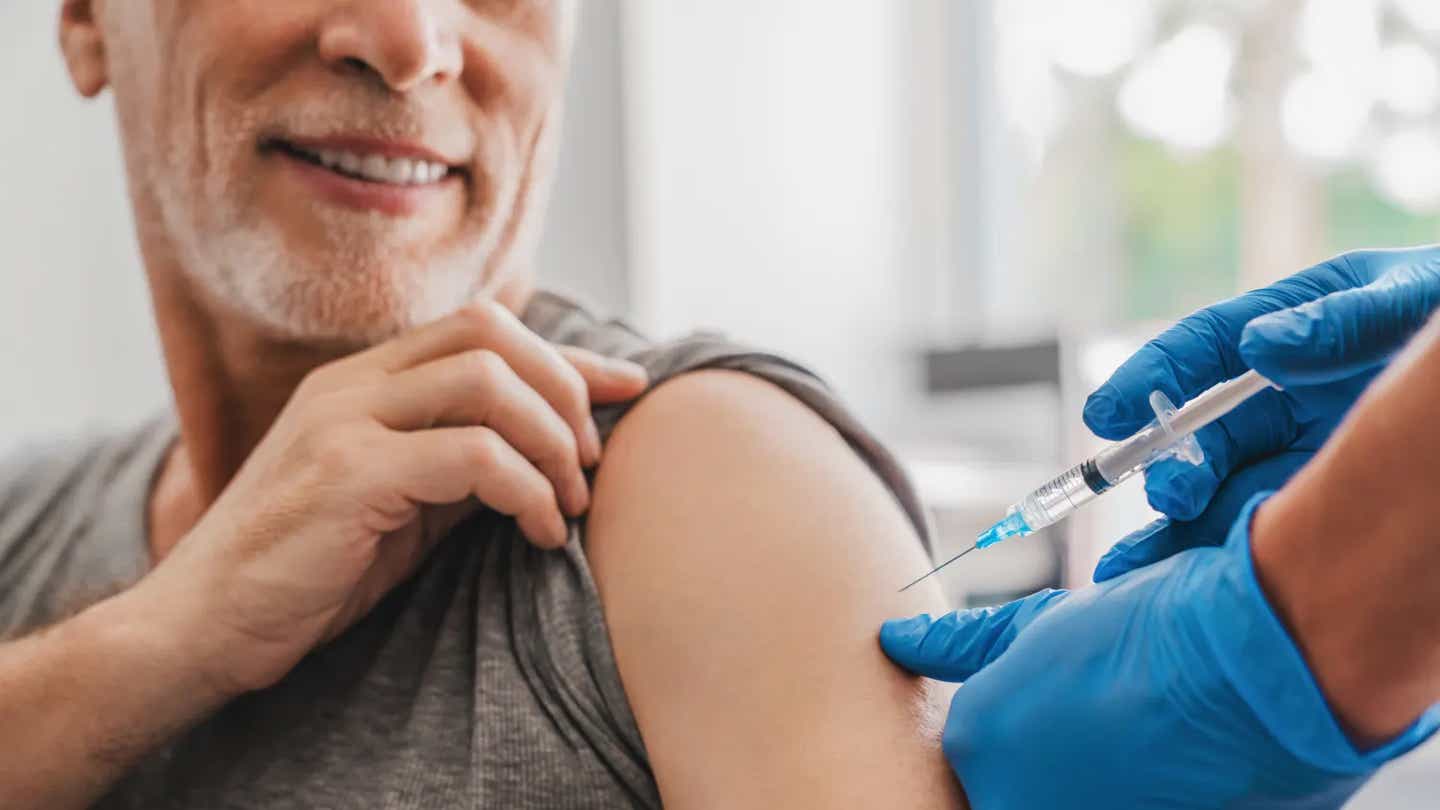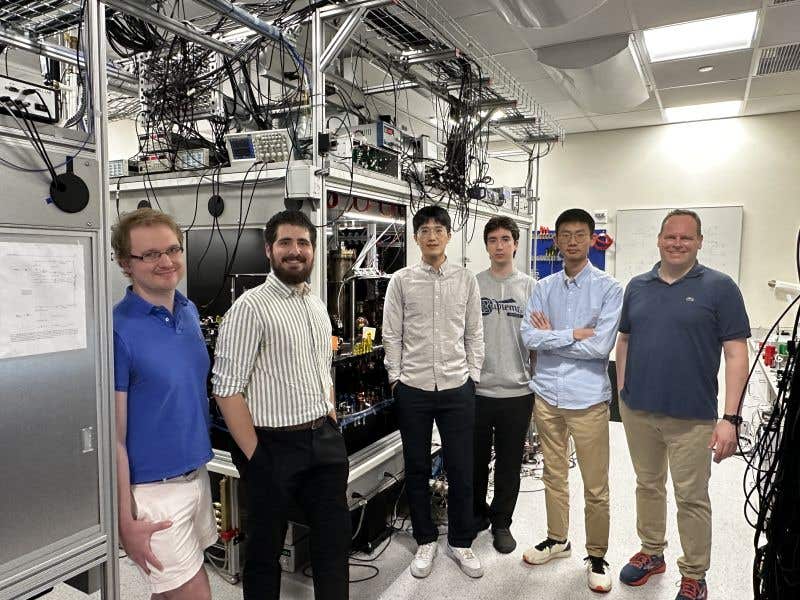RSV vaccines could render the same success as flu shots in reducing illnesses, study finds
Study has unveiled the potential of Respiratory syncytial virus (RSV) vaccines to significantly reduce the burden of illness and death

[Jan. 3, 2024: JD Shavit, The Brighter Side of News]
Study has unveiled the potential of Respiratory syncytial virus (RSV) vaccines to significantly reduce the burden of illness and death. (CREDIT: Creative Commons)
In a groundbreaking revelation, a recent study has unveiled the potential of Respiratory syncytial virus (RSV) vaccines to significantly reduce the burden of illness and death among individuals aged 60 and older in the United States.
These vaccines, if adopted on a wide scale akin to annual influenza vaccines, could herald a transformative shift in healthcare, not only saving lives but also alleviating the financial strain imposed by RSV-related outpatient visits and hospitalizations.
The study, led by senior author Alison Galvani, the Burnett and Stender Families Professor of Epidemiology (Microbial Diseases) at the Yale School of Public Health, sheds light on the promising prospect of RSV vaccines in tackling a virus that has long posed a threat to the elderly population.
"RSV causes substantial morbidity and mortality among the elderly in the U.S. and globally, but this is the first time that RSV vaccines have been available," says Galvani, emphasizing the pivotal role these vaccines could play in averting illness, reducing medical costs, hospitalizations, and ultimately saving lives.
Related Stories
Respiratory syncytial virus (RSV) is a common respiratory infection that typically induces mild cold-like symptoms in most individuals, with recovery occurring within one or two weeks.
However, the situation becomes markedly more serious for older adults and infants who are at a higher risk of developing severe RSV infections, which can prove life-threatening. It is worth noting that the study focused exclusively on the impact and cost-effectiveness of RSV vaccines for older adults.
The United States Food and Drug Administration (FDA) has recently approved two RSV vaccines, Arexy and Abrysvo, marking a significant milestone in the fight against RSV. According to the Centers for Disease Control and Prevention (CDC), RSV leads to an estimated 60,000 to 160,000 hospitalizations and claims 6,000 to 10,000 lives annually among adults aged 65 and older. As of December 1, only 14.8% of individuals aged 60 or older in the U.S. have received an RSV vaccine, based on CDC records.
Graphical study abstract. (CREDIT: Clinical Infectious Diseases)
To comprehend the potential impact of RSV vaccines, the researchers developed a model tailored to the characteristics of the U.S. population aged 60 and older. The study encompassed various outcomes, including the annual incidence of cases per 100,000 people necessitating outpatient, inpatient, and intensive care, along with the death rate among hospitalized patients. Additionally, the research examined the associated medical care costs and the implications on lost productivity.
The study delved into the effects of achieving a vaccination rate of 66% among adults aged 60 and older, which is comparable to the typical influenza vaccination coverage for adults aged 65 and above in the U.S. "It would be great if we could achieve even higher levels," Galvani remarks, underlining the importance of aiming for maximum vaccination coverage.
Overall reduction of RSV-related outpatient care (office and ED visits), inpatient care (hospitalization), and death among adults 60 y of age or older, compared to the scenario without vaccination over the first RSV season, with sigmoidal (A, B) and linear (C, D) vaccine efficacy profiles. Vaccination coverage was set to 66% (A, C) and 100% (B, D). Abbreviations: ED, emergency department; RSV, respiratory syncytial virus. (CREDIT: Clinical Infectious Diseases)
For reference, the study also explored the potential consequences of achieving full RSV vaccination coverage of 100%. In both scenarios, the researchers considered the vaccine's effectiveness in preventing the need for medical care and reducing mortality rates. The assessment spanned over one year and extended to two years.
The findings were striking, demonstrating that a 66% vaccination coverage in the first year could reduce outpatient care by 41.4% to 53.6%, hospitalizations by 57.6% to 60.5%, and RSV-related deaths by 58.5% to 60.4%. Expanding the vaccination coverage to 100% yielded even more promising results, reducing outpatient care by 62.9% to 81.2%, hospitalizations by 87.4% to 91.7%, and deaths by 87.6% to 91.3%.
Estimated NMB over the first RSV season as a function of price per dose for Arexvy and Abrysvo with different coverage of vaccination, and with sigmoidal (A) and linear (B) vaccine efficacy profiles. (CREDIT: Clinical Infectious Diseases)
In terms of cost-effectiveness, the study determined that the maximum acceptable price per dose for one season, with a 66% coverage rate, ranged from $118 to $127. The difference was marginal, at only $1 to $3, for 100% coverage.
Considering the annual cost savings made possible through vaccination, a program aiming to vaccinate 66% of adults aged 60 and older against RSV would cost the U.S. healthcare system between $6.4 billion to $7.1 billion for one season. In the case of 100% vaccination coverage, the cost would range from $9.7 billion to $10.7 billion, as revealed by the researchers.
It is essential to note that RSV vaccines are designed to provide protection over two RSV seasons, as indicated by clinical trials. However, the study's authors believed that, until real-world efficacy data becomes available, a one-season analysis would be more appropriate.
Seyed Moghadas, the paper's first author and a professor of applied mathematics and computational epidemiology at York University, expressed optimism about the upcoming data. "Within the next year or two years, as these vaccines are rolled out, we will get a lot of data on effectiveness and better analysis," he stated, underscoring the potential for improved strategies against RSV disease.
If real-world data substantiates the vaccines' effectiveness over two seasons, the study suggests that Arexvy could be considered cost-effective up to $235 per dose, and Abrysvo up to $245 per dose.
Accessibility and affordability are pressing issues in the American healthcare system, and the study's findings are poised to inform decision-makers about the health and economic benefits of widespread RSV vaccination.
As Galvani emphasized, these results underscore the importance of ensuring that RSV vaccines are accessible to everyone aged 60 and above, in order to realize their full potential in safeguarding the health and well-being of the elderly population.
With private insurers and Medicare plans weighing their coverage decisions, the fate of RSV vaccination in the United States hangs in the balance. The hope is that the evidence presented by this study will guide policymakers in making informed choices that can yield substantial benefits for the nation's seniors.
Note: Materials provided above by The Brighter Side of News. Content may be edited for style and length.
Like these kind of feel good stories? Get the Brighter Side of News' newsletter.



